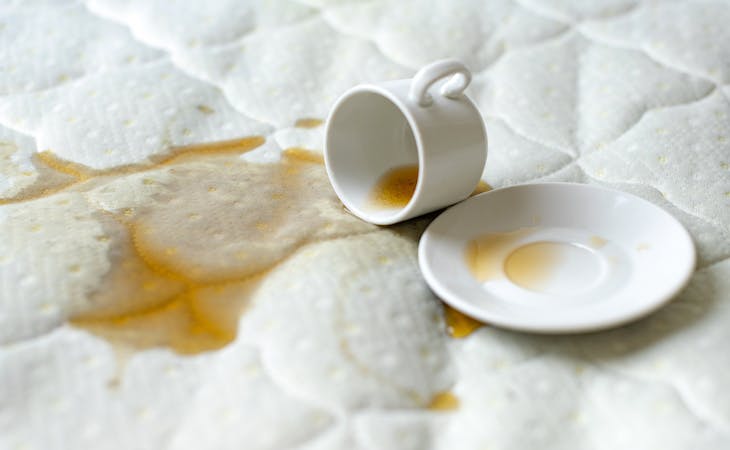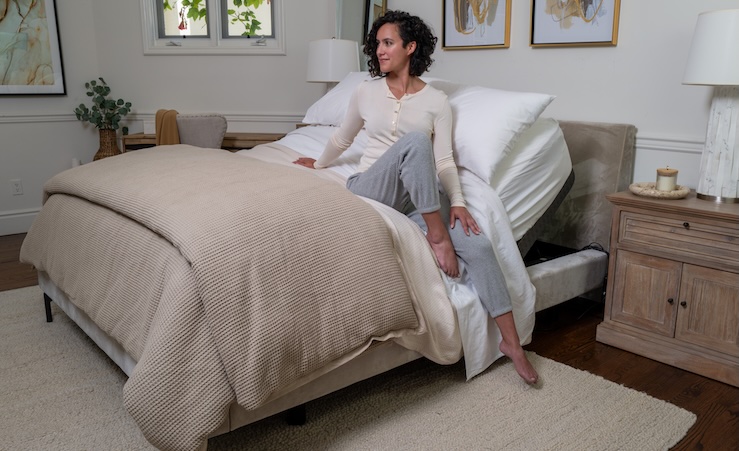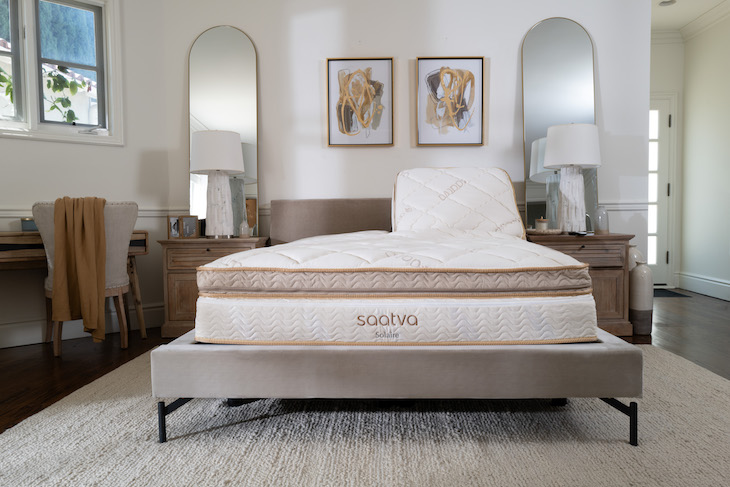We’ve all done it. Relaxing in bed with a hot cup of coffee in the morning—or watching a movie with a glass of red wine at night—and then it happens.
You spill a bit, or maybe drop the whole thing. It could be an accident. Maybe you were distracted by a ringing phone or a whimpering puppy—or maybe you were just careless.
Either way, that coffee or wine is now all over your bedding, including your mattress. Mattress stains are frustrating. Not only are they sometimes hard to remove, but they also look pretty unsightly and may even void a mattress warranty.
The secret to saving your sanity, as well as that mattress, is to act fast and use the right ingredients and techniques to remove a specific type of stain.
It’s important to remember that not all stains are created equally. But armed with our best expert advice for how to clean a mattress and remove those stains, you’ll be ready for whatever comes at you. Or spills while in your possession, as the case may be.
Stain Cleaning Agent Action to Take Blood White vinegar or 3% hydrogen peroxide Pour on stain, let it set, and gently blot. Pet urine Enzyme-based cleaner Soak with cleaner, rinse, and blot dry. Urine Solution of hydrogen peroxide, baking soda, and dish soap Spray with solution and blot area gently with a cloth or paper towel. Vomit Paste of baking soda and enzyme-based cleaner Wipe with cloth to remove as much as possible, then clean with paste. Coffee Water and vinegar or dish soap solution Spray with solution, then blot gently to remove stain. Wine Cold water and salt Apply solution, then blot the stain away. Oily foods or lotions Baking soda or dish soap Apply cleaner and let it penetrate, then wipe clean with wet cloth.
The importance of cleaning your mattress
We talk often about sleep hygiene. These are all those habits, such as a sleep schedule and a calming bedtime routine, that contribute to healthier sleep.
A clean and welcoming mattress is part of this—and there are a few important steps you can take to keep your mattress in the best shape for as long as possible to support a healthy sleep routine.
Here’s the deal: Moisture and stains on a mattress don’t just make it look dirty, but they can also make your bedroom a breeding ground for mold, mildew, dust mites, and allergens.
The bottom line: Stain removal is essential to sleep health as it can help prevent germs and allergens from entering your bedroom and disrupting your sleep.
How to clean a mattress
Just like you’d check the care label on a new designer sweater before throwing it in a washing machine and ruining it, it’s important to do the same for your mattress before cleaning it.
Regardless of the type of mattress stain you’re trying to clean, be sure to check the care instructions for manufacturer recommendations or cautions before proceeding. This important step takes just seconds (every mattress is required to have a care label) and can prolong the life of your mattress.
While it may seem like a good idea to use as much of a cleaning solution as possible when trying to remove stains, you don’t want to flood your mattress with water or liquid cleaners.
Mattresses aren’t designed to get wet, especially memory foam mattresses. They don’t dry quickly, and if yours stays damp for some time it can start to develop mold and mildew.
Rubbing alcohol, baking soda, hydrogen peroxide, vinegar, laundry detergent, citrus-based household cleaners, and dish soap are all good mattress stain removers. But, again, you’ll want to dab. Don’t rub or drench.
Watch this video for mattress-cleaning tips:
A great solution is 3/4 cup warm water, 1/4 cup vinegar, and a tablespoon of liquid dish soap in a spray bottle.
You’ll see this come up as a way to remove several types of mattress stains. Simply spraying it on the affected area and following these quick and easy steps should take care of most stains in no time.
4 steps for removing stains from your mattress
Experts recommend this basic four-step plan for treating most minor mattress stains:
- Absorb. For wet stains, it’s important to blot with a dry towel until no more liquid can be absorbed. Blotting is way better and a safer bet than to rub or scrub. When you blot and use a bit of pressure to remove moisture, you get results. For dry mattress stains, scrape off or vacuum up any excess mess, slightly wet using a damp cloth, then move to step 2.
- Add soap. Lightly spray or dab the cleaner you’re using onto the area. Some mattress stains, such as blood, need to sit with the cleaning solution on for 10 to 15 minutes so it can better penetrate. (See stain-by-stain specifics in the next section.)
- Blot. Press and blot with a dry cloth or paper towels to absorb liquid. Keep going until you can’t get any more liquid out. Repeat steps 2 and 3 if necessary.
- Air dry. It’s not always possible to put a mattress in direct sunlight, especially for those of us who live in urban apartments. But if you can’t get it in the sun, try to add as much air circulation and sunlight in the room as you can. Open windows, curtains, or blinds, and set up a fan. Depending on the size of the mattress stain, it may take several hours to dry completely.
- Optional: Deodorize. Once the mattress is totally dry, sprinkle a little bit of baking soda over the area (a sifter works well) to absorb lingering odors. (Here’s how to make your bedroom smell fresh.)
The most common mattress stains and how to remove them
Different types of mattress stains need to be removed in different ways. If you follow these tips for cleaning mattress stains, you’ll be able to easily remove the most common types of stains and extend the lifespan of your mattress.
Blood
Whether period blood or a cut from shaving, blood on mattresses will happen. Don’t panic. There are a few different ways to remove blood stains from mattresses, but the most effective way to do so is using either white vinegar or 3% hydrogen peroxide. These are both very commonly found in most households, so these stains shouldn’t be too difficult to remove in a timely manner.
What to use: White vinegar or 3% hydrogen peroxide
How to use: Pour a small amount of vinegar or peroxide directly onto the mattress stain.
- If using vinegar, let soak for 10 minutes, blot dry, and repeat, if necessary.
- If using one cup of hydrogen peroxide, bloodstains will foam up on contact. Blot the foam away, then let the area sit for five minutes.
- Dab with a towel dipped in cold water to “rinse” away vinegar or peroxide. Then blot and air dry per steps 3 and 4 of the basic plan above.
- Follow up by sprinkling with baking soda, which is a great way to absorb moisture and remove any wine odor from the mattress.
Pet urine
Urine stains are the most common on mattresses, especially from pets. With these types of stains, you don’t want to use things like bleach or hot water because of the way they could affect different mattresses. Follow these best practices when trying to remove urine stains from a mattress:
What to use: An enzyme-based upholstery cleaner specially formulated for pet stains
How to use: After step 1 of the basic plan, soak up even more liquid by adding weight and pressure: Put several paper towels or a damp terry cloth towel over the area and place some heavy books on top for a few minutes. Repeat using dry towels until the area is barely damp.
- Dab with a clean towel dipped in cool water to “rinse;” let sit for one minute.
- Apply enzyme cleaner and let sit for 15 minutes or per instructions on the product label.
- Thoroughly soak up liquid as above, adding weight by pressing down with your body or some heavy books, then air dry.
- If odors or visible soiling linger after drying, try a pet-odor neutralizer or carpet stain remover next.
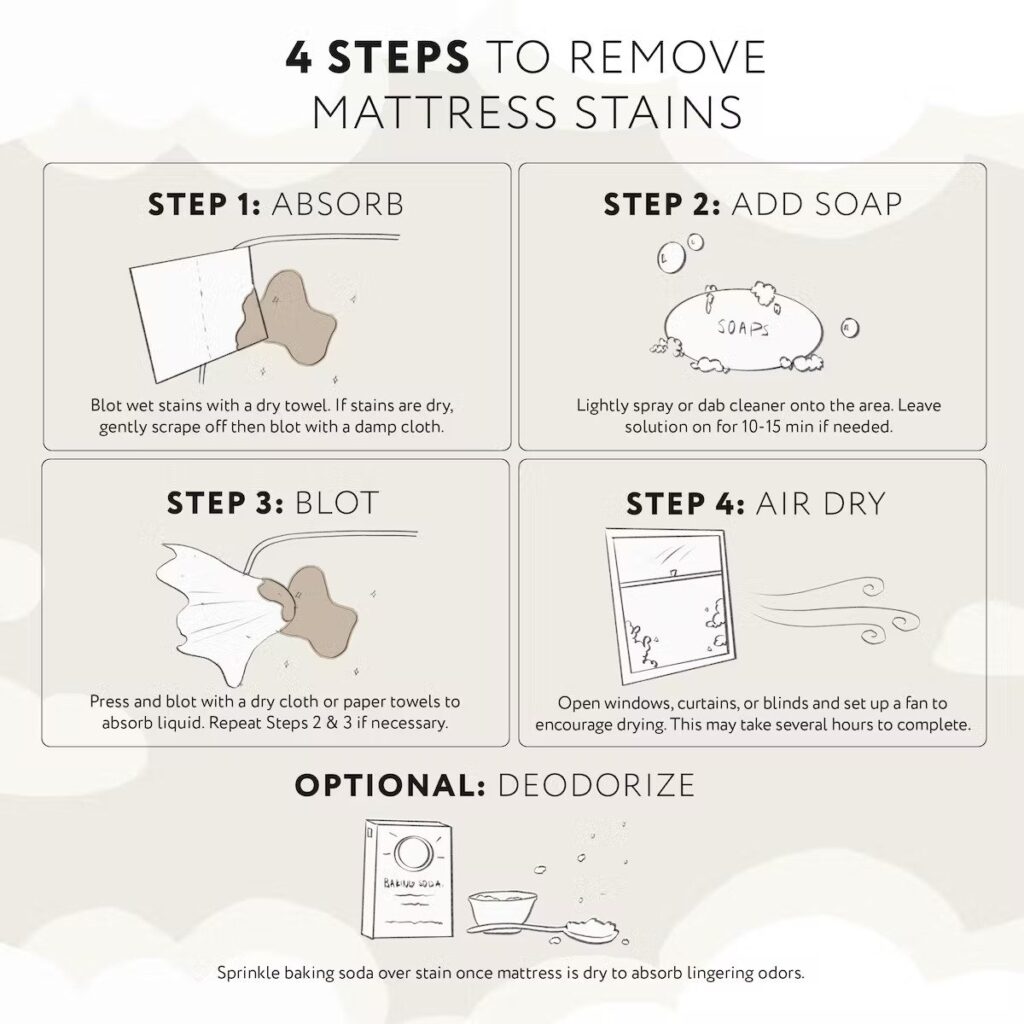
Urine
You’ll want to handle human bodily fluids differently than you would pet urine stains. There are specific enzyme-based upholstery cleaners on the market made specifically for pet stains, but you’ll want to avoid those in this case.
What to use: A solution of hydrogen peroxide, baking soda, and dish soap
How to use: Combine 8 ounces of hydrogen peroxide, 3 tablespoons of baking soda, and half a teaspoon of dish soap into an empty spray bottle. Shake the bottle gently to combine before use, then spritz onto the stain. The baking soda will also help to combat the urine order while cleaning the stain.
Vomit
We all vomit from time to time, whether it’s after a stomach virus or too much fun on a night out. But if you have children or pets, vomit stains are very common and some of the most time-consuming to clean up. Follow these easy steps to make cleaning these old stains a little easier.
What to use: Baking soda and an enzyme-based cleaner
How to use: Scrape the surface clean, then blot with rags or paper towels to absorb as much moisture as possible.
- Pour on a generous amount of baking soda to absorb odors and excess moisture. Let sit for 15 minutes, then vacuum up using the upholstery or crevice tool. (Be sure to clean the vacuum canister thoroughly afterward.)
- Apply a pet-stain product or enzyme-based cleaner or a liberal amount of the vinegar/dish soap solution.
- Absorb liquid again and air dry. Repeat the whole process if any odor remains.
- The baking soda isn’t just helpful at absorbing the moisture from the vomit but also the smells.
Coffee
It’s easy to get into the routine of enjoying coffee in bed in the morning while listening to the news or scrolling your phone. But spilling that coffee can stain your outfit—as well as your bedding and mattress, quickly. A combination of dishwashing liquid and vinegar is the best way to remove these tough stains.
What to use: The vinegar/dish soap solution we referenced earlier—but instead of putting it in a spray bottle, use a bowl or dish
How to use: Absorb liquid if the spill is fresh; slightly dampen with warm water if it’s dry.
- Carefully blot with a light-colored, dry cloth, starting at the edges and moving inward to keep color from spreading. Continue until no more brown transfers onto your cloth.
- Dip a clean cloth in the dish of vinegar solution and blot onto stain from outside edges moving inward. Blot dry.
- If there was cream and/or sugar in the coffee, also dab a mixture of laundry detergent and warm water onto the stain, “rinse” by dabbing with a fresh wet cloth, then blot dry.
- Coffee and any dairy that was in the coffee can sometimes leave behind a sour odor, so adding baking soda or vinegar can help to get rid of that odor.
Wine
A glass of wine in bed while watching the latest installment of your favorite TV show can be a great way to unwind. But much like coffee, wine stains are hard to clean—especially red wine. Spilling a glass of red wine on your mattress can be devastating. Using the following simple steps to remove wine stains, your mattress will be clean in no time.
What to use: Cold water and salt, or Wine Away, a spray formulated specifically for red wine stains (it also works on red stains from spaghetti sauce, juice, or cough syrup)
How to use: Absorb as much wine as you can with a cloth or paper towels.
- If using Wine Away, apply according to label instructions for cleaning the carpet.
- If using salt, dab cold water onto the stain with a wet cloth and blot away liquid. Sprinkle salt all over the soiled area; wait three minutes. Dab with cold water and rub into the stain. Blot dry. Sprinkle, rub, and blot as many times as you need to lift the stain; then air dry.
- If there’s a wine odor left on the mattress, spot-treating with a baking soda paste will help.
Oily foods or lotions
Oily foods and lotions can cause stains you may not be able to see right away. They can also be difficult to clean because they’re different from regular liquid stains. Here’s how to clean them.
What to use: Baking soda; dish soap
How to use: Scrape off as much of the grease as you can. A credit card works well for this.
- Sprinkle with baking soda, let sit for 20 minutes; scrape away baking soda and vacuum area. This baking soda will remove the moisture and also any accompanying odor.
- If soiling remains, grab some original blue Dawn dish soap. (It’s famous for removing oil, even from sea birds in oil spills.) Mix a few squirts of dish soap into warm water and dab onto the stain.
- Blot with a dry towel to absorb wetness, then air dry.
Regular mattress maintenance
A mattress is an important investment in your home and sleep health—and it’ll last longer and be in better shape with regular mattress maintenance. Here are a few maintenance tips to keep in mind:
- Rotate your mattress annually. This can help extend the lifespan of your mattress and keep it as comfortable as possible.
- Regularly clean your mattress. This includes vacuuming, which can get rid of dust, debris, mites, and also help with keeping it free of dirt and stains.
- Use a mattress protector. This provides an additional layer of protection to the mattress against various stains, dust, and spills. Therefore, it can help increase the mattress’s lifespan and keep it feeling fresh and clean longer.
Mattress accessories to help prevent stains
Much like we use sunblock to protect our skin and sunglasses to protect our eyes, mattress protectors, pads, and toppers can help protect your entire mattress and make the cleaning process a whole lot easier when spills do happen.
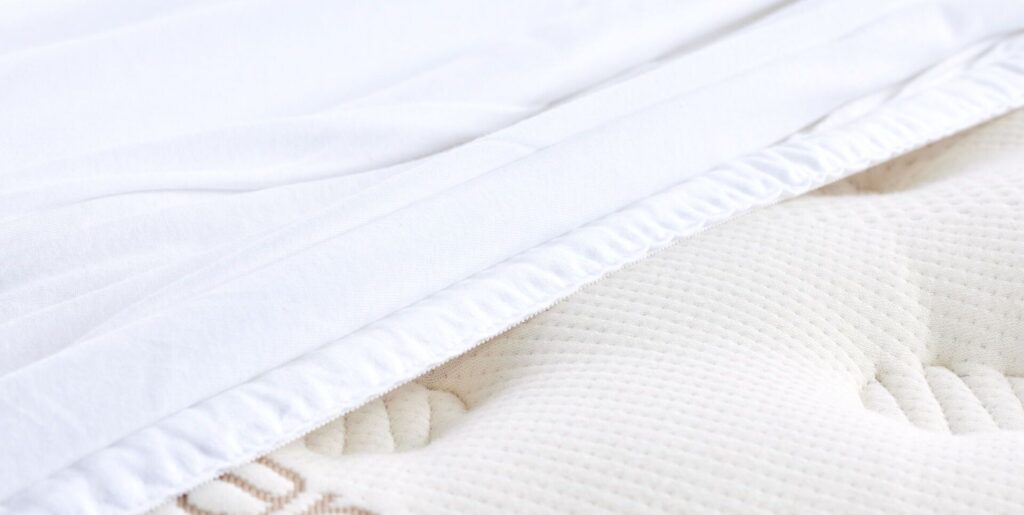
Mattress protectors
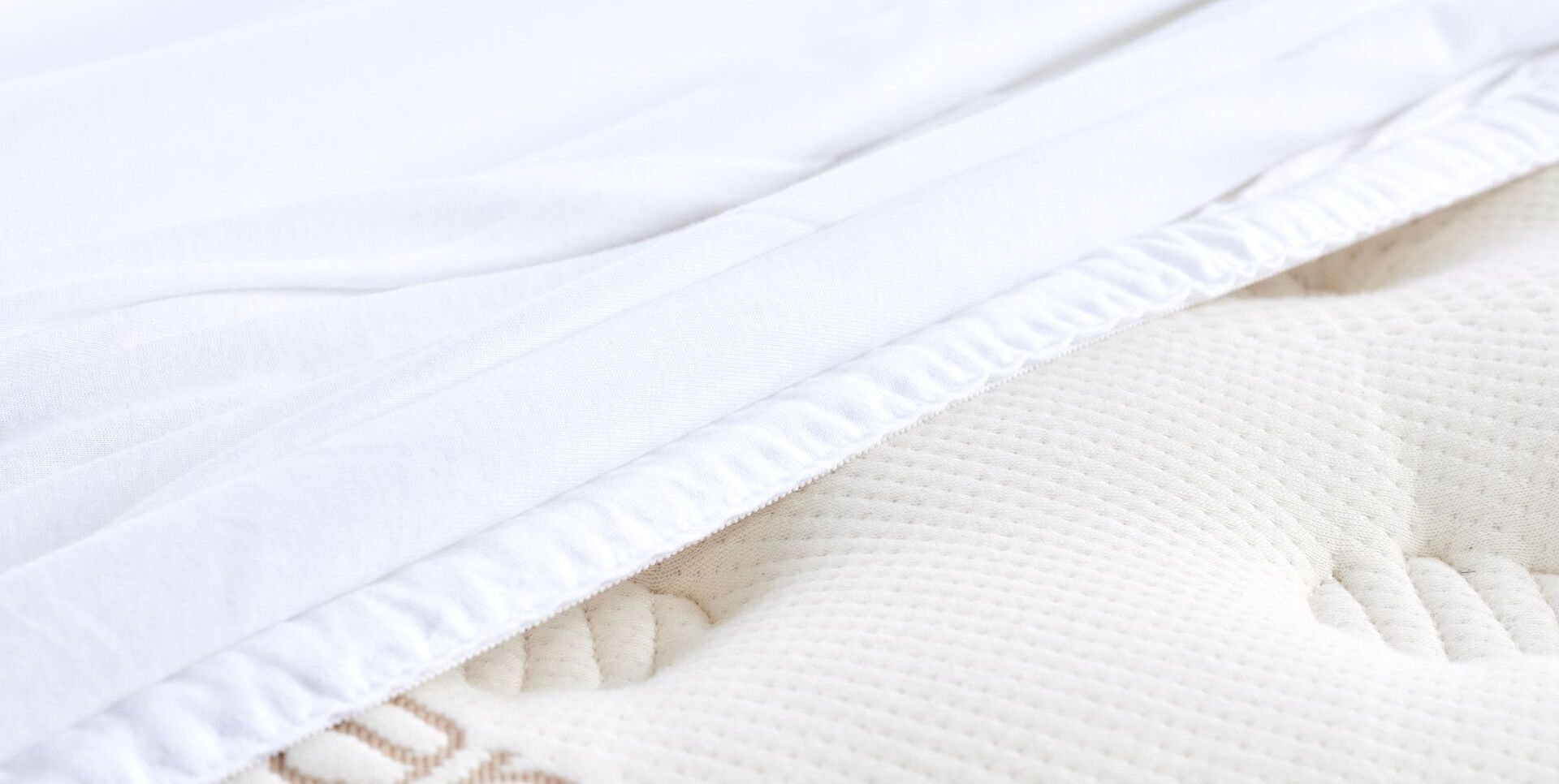
Breathable, undetectable protection from spills, dirt, stains, and humidity
are some of the easiest and most cost-effective ways to prevent stains on a mattress. They work just like a fitted sheet but have a little extra padding to help prevent staining. (Learn how to secure fitted sheets.)
You can wash these in a regular washing machine with your regular linens. Just keep in mind they don’t offer the additional padding and comfort that a mattress pad or topper on the market does.
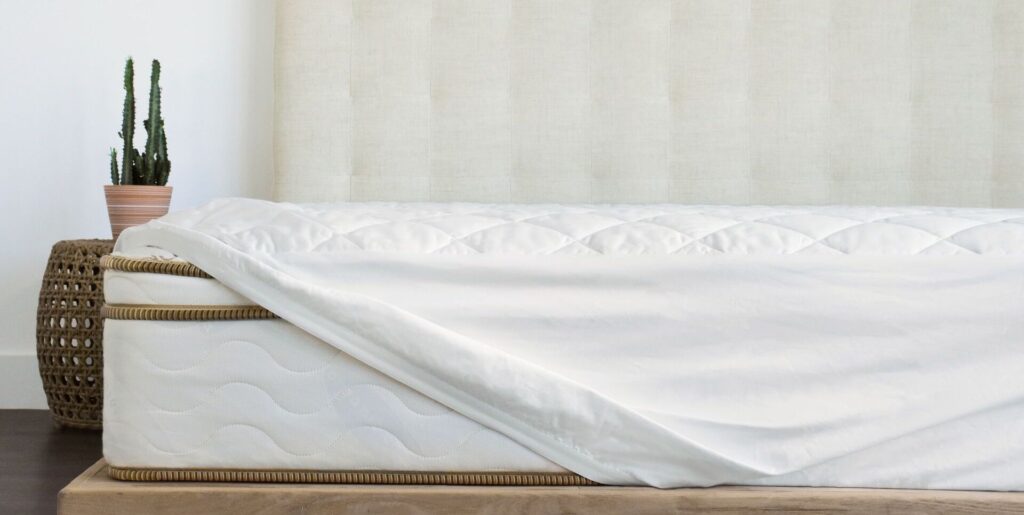
Mattress pads
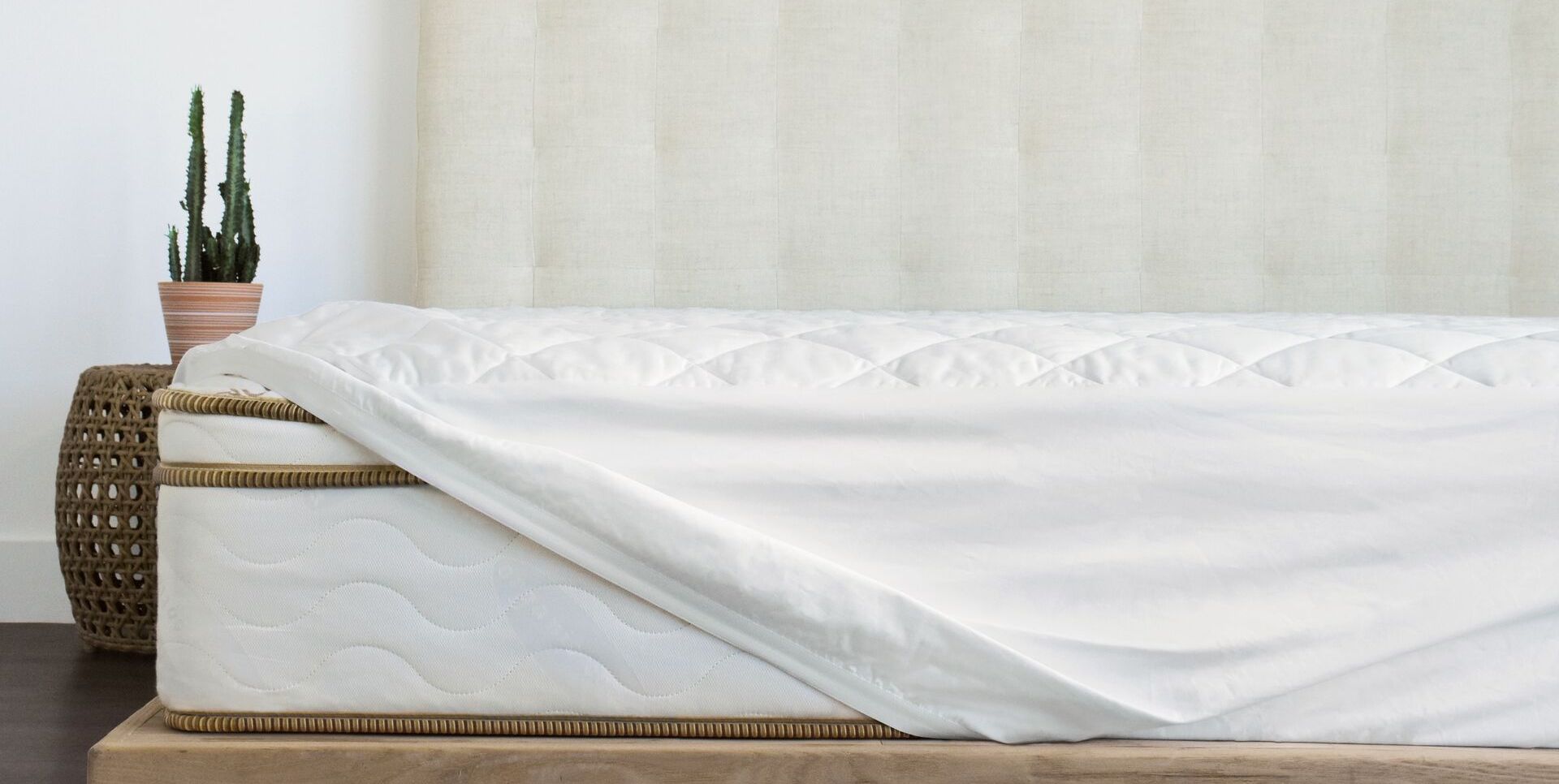
Instantly adds a plush layer of comfort and protection
are small, removable covers that wrap around the sides of your mattress. They add an additional layer of extra comfort but mostly function to protect a mattress from stains. Mattress covers like these are great for those that don’t want to change their mattress comfort level.
FAQs
How do I remove stains from a mattress?
Start by researching (this is a handy guide!) the type of stain and the cleaning agents that best help, then work as quickly as possible.
How do I get a deep stain out of a mattress?
To get rid of a deep stain on a mattress, absorb wet or dry stains, apply your cleaning solution, blot the stained areas, and air-dry your mattress. You can also deodorize with baking soda as a final step for lingering odors.
What causes yellow stains on a mattress?
Pet urine, urine, vomit, coffee, and oily foods or lotions can cause yellow stains on a mattress.
What is the best stain remover for a mattress?
The best stain remover for a mattress is a mixture of 3/4 cup warm water, 1/4 cup vinegar, and a tablespoon of liquid dish soap in a spray bottle.
Too many stains? It may be time for a new mattress
If you’ve got one-too-many yellow stains on your mattress, it may be time for a new one. We have a wide selection of mattresses, bed frames, and bedroom accessories to make refreshing your bedroom easy.
With mattresses ranging in crib size to California king, our large selection of mattresses offers something for everybody. Take our quick and easy online mattress quiz to find out which one of our beds is the best mattress for you.

